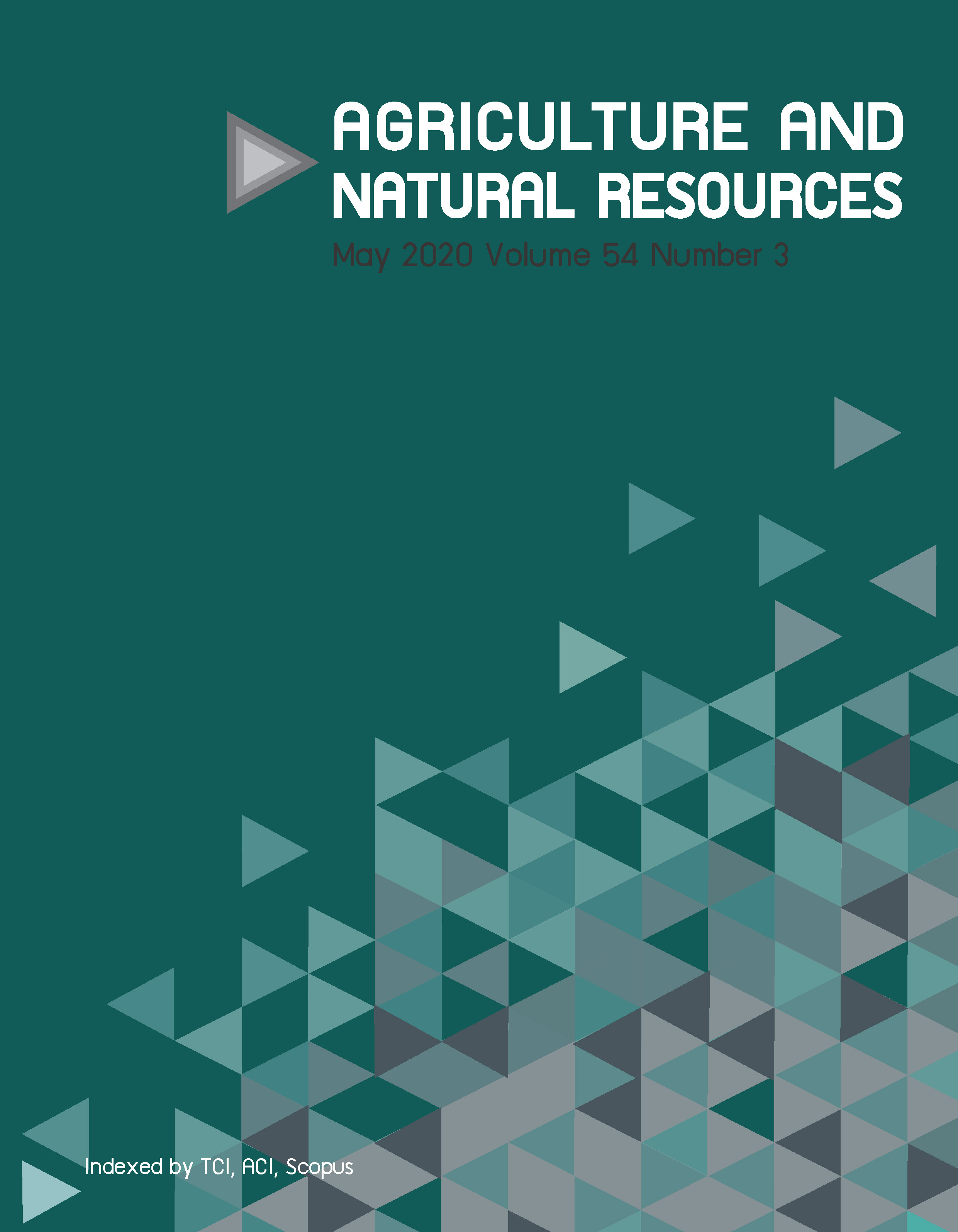Water stable aggregate distribution of lowland, humid, tropical, salt-affected soils
Keywords:
Paddy soil, Salt-affected soil, Soil property, Water-stable aggregateAbstract
Ten areas of salt-affected soils in northeast Thailand were selected for studying soil properties and water-stable aggregates and their relationship. There were six saline sodic and four sodic soils with different salinity levels ranging from non-saline to very strongly saline (0.14–30.0 dS/m) and sodium adsorption ratios in the range of 4.52–94.54. There was a similar distribution trend in all 10 salt-affected soils of water-stable aggregates in all six size classes: 2–8 mm (WSA1), 1–<2 mm (WSA2), 0.5–<1 mm (WSA3), 0.25–<0.5 mm (WSA4), 0.1–<0.25 mm (WSA5) and <0.1 mm (WSA6). WSA6 was distributed in the highest amount (7.98–81.01 g/100 g soil) and varied greatly within the soil profile compared to the other sizes. The different-sized aggregates in the saline sodic soils varied more than in the sodic soils. The sodic soils had a higher WSA6 content than the saline sodic soils (19.25–78.59 compared to 13.01–75.01 g/100 g soil) but the structure of the sodic soils was more stable than the saline sodic soils, particularly in the topsoil where there was a higher amount of WSA1 (0.06–69.35 compared to 0.40–20.06 g/100 g soil) and greater mean weight diameter (MWD; 0.23–0.58 compared to 0.07–0.30 mm). Organic matter contributed to the formation of WSA1 and a larger MWD, with correlation coefficients of 0.33 (p < 0.01) and 0.37 (p < 0.01), respectively, while soil electrical conductivity (r = -0.28, p < 0.01) and sodium adsorption ratio (r = -0.28, p <0.01) decreased the stability of WSA1. The clay content and extractable calcium and magnesium contributed to the stability of WSA2–WSA6 and in WSA6 this increased with an increasing sodium adsorption ratio (r = 0.46, p < 0.01). The available potassium in the soils was positively correlated with WSA1 and WSA2 (r = 0.22, p > 0.01 and 0.33, p < 0.01, respectively). In addition, the cation exchange capacity had a positive correlation with WSA 3 (r = 0.32, p < 0.01) and a negative correlation with WSA5 (r = -0.45, p < 0.01).
Downloads
Published
How to Cite
Issue
Section
License
Copyright (c) 2020 Kasetsart University

This work is licensed under a Creative Commons Attribution-NonCommercial-NoDerivatives 4.0 International License.
online 2452-316X print 2468-1458/Copyright © 2022. This is an open access article under the CC BY-NC-ND license (http://creativecommons.org/licenses/by-nc-nd/4.0/),
production and hosting by Kasetsart University of Research and Development Institute on behalf of Kasetsart University.







